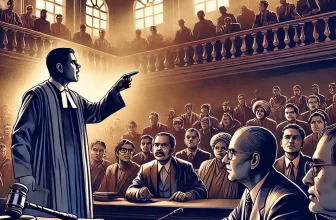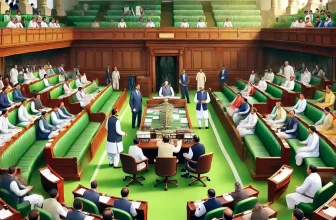The Indian judiciary, a cornerstone of the world’s largest democracy, is renowned for its profound legal heritage and pivotal role in upholding the Constitution. Beyond its solemn duties, the judiciary has been part of several intriguing and lesser-known events that highlight its unique character.
Here are 10 unbelievable facts about the Indian judiciary that will surprise you!
1. The Supreme Court Once Operated from a Palace!
- When India became independent in 1947, the Supreme Court had no dedicated building.
- From 1950 to 1958, it functioned from the Chamber of Princes in Parliament House, which was once used by royal representatives of princely states.
- The current Supreme Court building in New Delhi was inaugurated in 1958, designed to resemble an open book of law.
Most people assume that India’s highest court always had a grand building, but its humble beginnings in a parliament chamber make it unique.
2. No Supreme Court Judge Has Ever Been Impeached
- The Indian Constitution allows impeachment of Supreme Court and High Court judges under Articles 124(4) and 217.
- However, no judge has been successfully impeached so far.
- The closest case was Justice V. Ramaswami (1993), but the impeachment motion failed in Parliament.
While many public officials have faced legal action, not a single Supreme Court judge has been removed in 75+ years of India’s independence!
3. Symbolic Architecture of the Supreme Court Building
- Design Significance: The Supreme Court building in New Delhi is designed to project the image of the Scales of Justice.
- The central dome signifies balance and fairness, fundamental principles upheld by the judiciary.
4. Introduction of Public Interest Litigation (PIL)
Judicial Activism: In the 1980s, the Indian judiciary embraced Public Interest Litigation (PIL), allowing individuals or groups to file petitions on behalf of those unable to do so. This initiative expanded access to justice and enabled the courts to address a broader range of societal issues.
5. The Federal Court Preceded the Supreme Court
- Judicial Evolution: Before the establishment of the Supreme Court in 1950, the Federal Court of India functioned from 1937 to 1950, serving as the apex judicial body during British rule.
6. A Judge Who Experienced Incarceration
- Justice V.R. Krishna Iyer: An interesting and lesser-known fact about Justice V.R. Krishna Iyer is that he is the only Supreme Court judge to have been jailed after independence. In 1948, he was arrested for allegedly assisting communists, spending a month in Cannanore Central Jail before being released due to lack of evidence.
7. The Mysterious Nagarwala Case
- Impersonation Scandal: In 1971, Rustom Sohrab Nagarwala impersonated then-Prime Minister Indira Gandhi’s voice over the phone, convincing a bank cashier to hand over ₹60 lakhs. The case remains shrouded in mystery and has been a subject of intrigue in India’s legal history.
8. The Bhawal Case: A Royal Resurrection
- Identity Dispute: The Bhawal case revolved around a man claiming to be the prince of Bhawal, who was presumed dead a decade earlier. His return led to prolonged legal battles over his identity and the rightful inheritance of the estate.
9. Unique Architectural Features of the Supreme Court
- Emblematic Statues: The Supreme Court premises house significant statues, including a life-size figure of Mahatma Gandhi, unveiled in 1996, symbolizing truth and non-violence, and a 7-foot tall statue of Dr. B.R. Ambedkar, unveiled in 2012, honoring the principal architect of the Indian Constitution.
10. The Machhi Singh Case: Defining ‘Rarest of Rare’
Legal Precedent: The Machhi Singh case in 1983 led the Supreme Court to define the “rarest of rare” doctrine, setting guidelines for when the death penalty should be applied in India.
Final Thoughts: More Than Just a Courtroom
These intriguing facets of the Indian judiciary not only underscore its rich history and pivotal role in upholding justice but also highlight the unique and sometimes enigmatic events that have shaped its journey.





